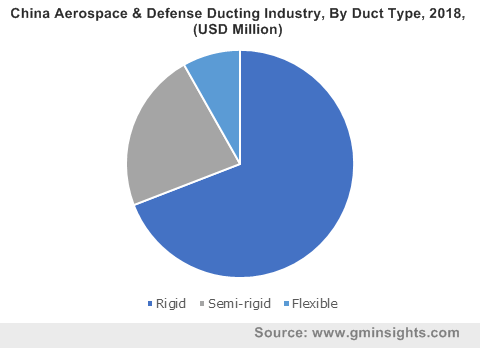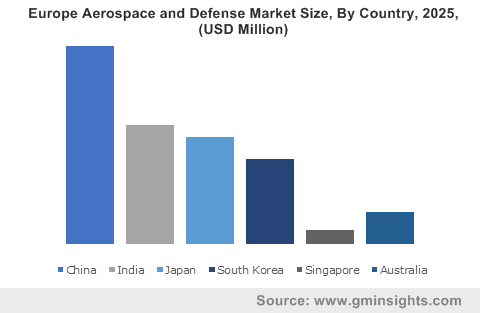Get a free sample of Aerospace & Defense Ducting Market
Thank you!
Your inquiry has been received. Our team will reach out to you with the required details via email. To ensure that you don't miss their response, kindly remember to check your spam folder as well!
Form submitted successfully!
Error submitting form. Please try again.
Get a free sample of Aerospace & Defense Ducting Market
Thank you!
Your inquiry has been received. Our team will reach out to you with the required details via email. To ensure that you don't miss their response, kindly remember to check your spam folder as well!
Form submitted successfully!
Error submitting form. Please try again.
Aerospace & Defense Ducting Market Analysis
Commercial aircrafts are anticipated to hold a significant share in the aerospace & defense ducting market owing to rising demand for air travel and cargo transportation. Rising disposable income in emerging economies is prominently augmenting the air passenger traffic, thereby escalating the segment size. Further, larger cabin areas and air volume requirements in wide body aircrafts is providing potential opportunities for the segment growth.
Regional aircrafts are expected to witness a substantial growth owing to growing regional air connectivity and expansion of travel routes. Airliners are expanding the fleet size for serving direct regional new routes. For instance, in June 2018, Delta Airlines ordered 20 new CRJ900 regional jets from Bombardier for connecting domestic air routes.

Rigid duct holds a significant share in aerospace & defense ducting market owing to higher air volume supply capabilities. Less resistance, better reliability and endurance limits offered by rigid ducts are positively influencing the market over the forecast timeframe. Moreover, availability of numerous sizes and cross sections of rigid ducts for airframe applications will further support the industry size.
Semi rigid aerospace & defense ducting market size will witness around 5% CAGR till 2025 owing to their increasing deployment in aircraft heating and ventilation systems. Moreover, easy maintenance, quick installation and notable expansion and contraction capabilities are positively influencing the segment size over the projected timeframe.
Airframe segment will dominate the aerospace & defense ducting market size, accounting for over USD 4.2 billion till 2025. Incorporation of airframe ducts for cabin air conditioning, oxygen control and anti-icing over leading edges of wings will significantly propel the segment size over the study timeframe. Increased adoption of wide body aircrafts incorporating larger cabin areas will further augment the industry size.
Engine segment will witness a considerable growth in the market size owing to utilization of high temperature and pressure ducts in bleed air systems. High precision ducts utilized for decreasing the airflow velocity in aircraft engines are gaining higher visibility. Moreover, development of high-performance turbofan engine ducts offering pressure variation and minimal turbulence will support the industry growth.
High pressure aerospace & defense ducting market will showcase substantial growth owing to increasing utilization in cabin pressurization systems. Effective extraction of bleed air through large turbofans requires high pressure ducting across the air conditioning system. Moreover, incorporation of ultra-high-pressure engine technologies to reduce the carbon emissions will positively influence the segment size over the forecast timeframe.
Low pressure segment will showcase potential growth prospects owing to their multiple benefits including lower noise and enhanced airflow transmission capabilities. Increasing preference for utilizing low pressure ducts providing reduced frictional losses and lower space requirements will prominently augment the segment share.
Titanium and titanium alloys are anticipated to hold a significant share in the aerospace & defense ducting market owing to their higher strength coupled with excellent weldability and ductility. Titanium ducts offer higher corrosion and thermal resistance without compromising structural integrity and will provide strong growth prospects for the segment share. Development of alloying elements offering reduced maintenance and effective compatibility with metals will support the industry size.
Composite segment will witness steady growth in the market owing to their increasing applications in environmental control systems. Increasing preference for improving the thermal efficiency and reducing the CO2 emissions will prominently contribute towards the adoption of composite ducting for air management. Moreover, stringent laws and regulations pertaining with aircraft emissions will positively support the segment growth over the forecast timeframe.

Asia Pacific is projected to hold a substantial share owing to the rising air passenger traffic and aircraft deliveries. Expansion of fleet size along with improving economic conditions are driving the industry size over the study timeframe. For instance, in 2017, AirAsia Group expanded its operating fleet by 30 aircrafts to cater the increasing passenger traffic. Incorporation of lightweight and energy efficient ducts for next generation aircrafts will support the industry proliferation.
North America aerospace & defense ducting market will witness significant growth owing to the strong presence of aircraft manufacturers across the region. Industry players are maintaining strategic contracts and agreements for strengthening their foothold in the industry. For instance, in September 2017, Triumph Group signed the extension of contract for ECS ducting with Boeing, further bolstering their partnership and increasing revenue generation opportunities. Expansion of manufacturing facilities and proliferating aircraft production are positively influencing the market share.
Which type of aircrafts are expected to substantially fuel aerospace and defense ducting market size?
Aerospace ducting will experience significant installation across commercial aircrafts owing to consistent rise in disposable incomes, air passenger traffic and global cargo movement.
Why is North America emerging as a key consumer for aerospace & defense ducting providers?
North America is one of the largest markets for aerospace and defense products owing to presence of leading aircraft and parts manufacturers as well as strong industry contracts and agreements.
How are stringent regulations driving the production of ducting for aerospace applications?
Agencies like the FAA and ICAO have established safety standards and regulations for aircraft ducting with regards to smoke and flame resistance, impacting the product development and adoption.
What is the expected growth rate for aerospace & defense ducting industry share during the forecast timespan?
The industry share of aerospace & defense ducting is estimated to exhibit over 4% CAGR from 2019 to 2025.
What was the size of the global aerospace & defense ducting market in 2018?
The market size of aerospace & defense ducting was valued at around USD 5 billion in 2018.
What are the growth forecasts for airframe segment in the A&D ducting market?
According to the analysts at GMI, the airframe application segment will account for over USD 4.2 billion market revenue by 2025.